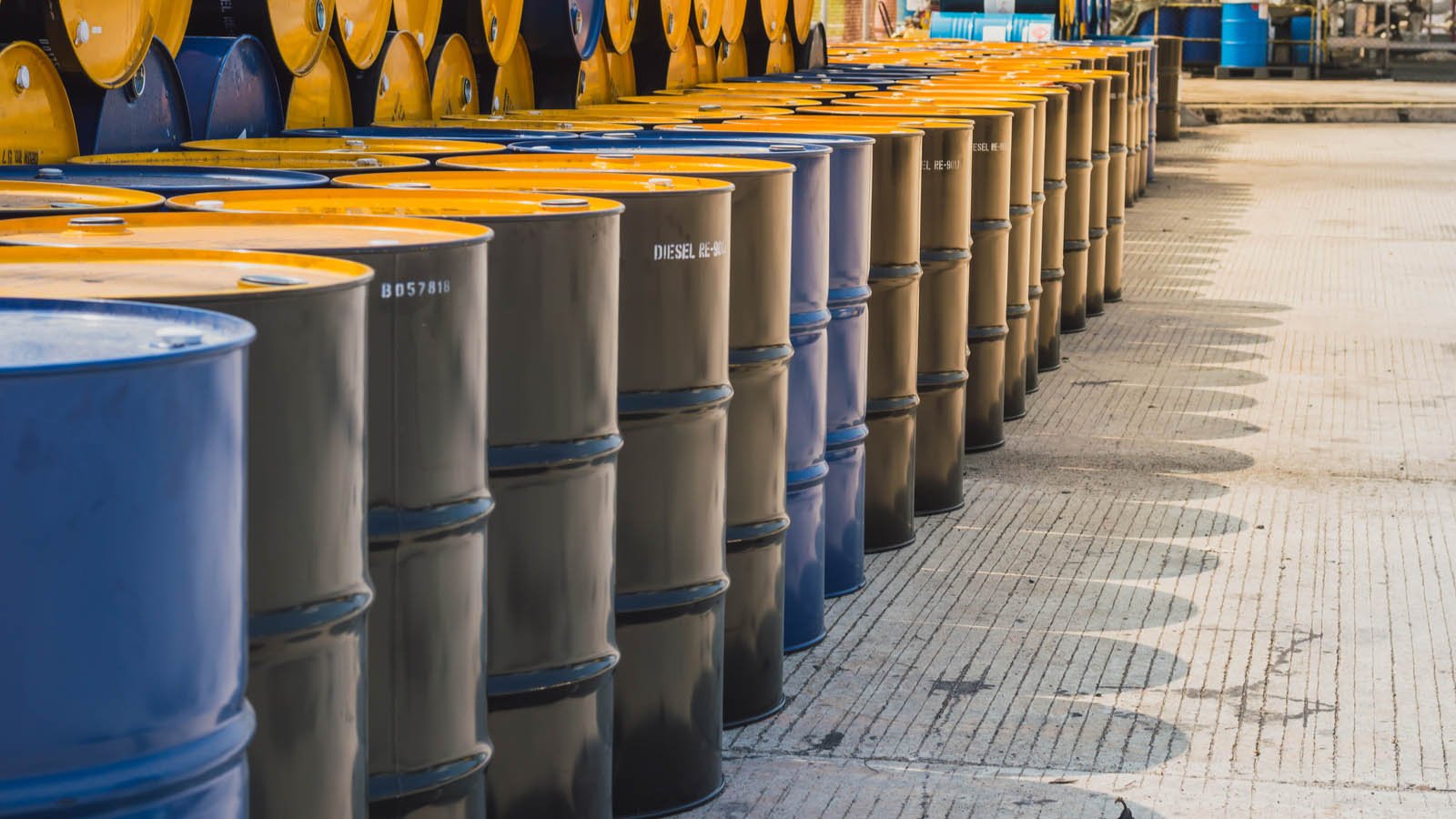Oil stocks have been among the market’s worst stocks to own over the past few years. The global supply glut has caused oil prices to fall significantly as many of the world’s largest producers have ramped up production. At the same time, the coronavirus pandemic caused demand for refined products to plunge.
This has served as a major headwind for the entire energy sector, and particularly for oil stocks. Many oil companies have had to cut or suspend their dividends as a result. But fortunately for investors, there may be signs of improvement.
As the U.S. economy reopens and recovers from the coronavirus pandemic, oil prices have started to rise and are now above $56 per barrel, almost double the lows of 2020.
A continued rally in oil prices would be great news for energy stocks. But even if oil remains at the current level, the following oil stocks should be able to maintain their hefty dividends.
My three picks today are:
Oil Stocks to Buy: Phillips 66 (PSX)

Phillips 66 is one of the largest U.S. oil refiners. It also operates midstream, chemicals, and marketing and specialties businesses.
Its midstream assets include 22,000 miles of pipelines in the U.S., while its refining system includes 2.2 million barrels per day of refining capacity. Its chemicals business consists of 28 global manufacturing facilities, while the marketing and specialties business consists of over 7,500 branded outlets in the U.S. and another 1,600 locations internationally. The company ended 2020 with $50 billion in assets.
Phillips 66 does not have a long history, as it was spun off from ConocoPhillips (NYSE:COP) in 2012. But it has increased its dividend every year since the spin-off, qualifying the company as a Dividend Challenger.
Last year was a difficult year for Phillips 66. The coronavirus pandemic caused the economy to fall into recession, and significantly reduced demand for refined products. As a result, Phillips 66 reported an adjusted loss of $382 million, or 89 cents per share for the year. Despite these pressures, Phillips 66 generated operating cash flow of $2.1 billion, an indication of its leadership position in the industry and its strong assets.
The company has multiple catalysts for growth going forward, due to new projects that will increase capacity. In the fourth quarter, Phillips 66 completed two new 150,000 barrel-per-day fractionators at its Sweeny Hub, bringing the total fractionation capacity to 400,000 barrels per day. Phillips 66 plans for four new fractionators in total, which will raise capacity to 550,000 barrels per day later in 2021.
Separately, Phillips 66 is ramping up the South Texas Gateway Terminal. Completion is expected in the first quarter of 2021, which will raise storage capacity to 8.6 million barrels with up to 800,000 barrels-per-day of throughput capacity.
Phillips 66 is a shareholder-friendly company that returns significant amounts of cash each year. Cumulative distributions, including dividends and share buybacks, grew at a 21% annual rate since 2013. The stock has a current dividend yield of 5%, which is highly attractive for income investors.
Enbridge (ENB)

Enbridge is an oil and gas company based in Canada. It operates four major businesses: Liquids, Gas Transmission, Gas Distribution, and Power.
The Liquids business is its largest, generating over half of the company’s annual EBITDA, and accounting for 25% of the crude oil transported through North America. The Gas Transmission segment represents 29% of annual EBITDA, and accounts for 20% of the gas consumed in the United States. The Gas Distribution and Power businesses represent 13% and 5% of annual EBITDA, respectively.
Aside from higher oil prices, Enbridge is investing in renewable energy as an additional growth catalyst. The company has 4.6 gigawatts of renewable energy in operation or under development and has over 20 utility-scale renewable energy facilities. In all, Enbridge expects to grow its distributable cash flow by 5% to 7% per year through 2023.
Enbridge’s dividend should remain safe, even in a recession, because of the company’s strong assets and sufficient cash flow. Enbridge also has a healthy balance sheet with a BBB+ credit rating, while 95% of the company’s customers have investment-grade ratings themselves. Enbridge ended 2020 with a debt-EBITDA of 4.7x, which is within the company’s target range.
Enbridge has delivered total returns of 15% per year over the past 25 years, according to the company. It has done this through steady growth, and a high and growing dividend payout.
Continued growth and a healthy balance sheet should allow Enbridge to continue raising its dividend, as it has done for 26 consecutive years. Based on the annual dividend payout of $2.62 per share, shares currently yield 7.4%. With an expected dividend payout of 69% for 2021 in terms of distributable cash flow, Enbridge’s dividend appears safe.
Enterprise Products Partners LP (EPD)

Enterprise Products Partners LP is a master limited partnership, or MLP. It is a midstream energy company, which means it owns and operates energy infrastructure such as pipelines and storage terminals.
EPD is not an exploration and production company; instead, it stores and transports the commodities. This is an important distinction, because it partially insulates midstream firms from volatility in underlying commodity prices.
As a midstream operator, EPD collects fees based on the amounts of materials transported and stored throughout its assets. This results in a steadier stream of cash flow, rather than being reliant on the price of the commodity itself. The appeal of the midstream business model is that the highest-quality operators like EPD tend to hold up better when oil prices are falling.
This is why EPD held up so well in 2020. For the year, free cash flow increased 8% to $2.7 billion, while distributable cash flow totaled $6.4 billion. DCF covered the annual distribution payout by 1.6x last year, implying sufficient coverage.
Indeed, EPD has a long history of maintaining distributions which is quite rare in the energy sector. It has increased its distribution for 22 consecutive years. Another appealing feature of MLPs is their high yields, and EPD does not disappoint with a distribution yield of 8.5%.
Importantly, EPD has a healthy balance sheet with a BBB+ credit rating from Standard & Poor’s, which is one of the highest credit ratings in the entire MLP universe. Maintaining a strong balance sheet helps further the distribution safety. EPD has continued to increase its distribution, even during recessions, thanks to its strong assets and steady business model.
On the date of publication, Bob Ciura did not have (either directly or indirectly) any positions in the securities mentioned in this article.
Bob Ciura has worked at Sure Dividend since 2016. He oversees all content for Sure Dividend and its partner sites. Prior to joining Sure Dividend, Bob was an independent equity analyst. His articles have been published on major financial websites such as The Motley Fool, Seeking Alpha, Business Insider and more. Bob received a bachelor’s degree in Finance from DePaul University and an MBA with a concentration in investments from the University of Notre Dame.
